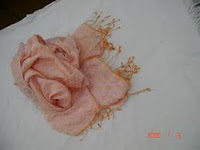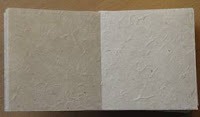 The kukri (Devanagari: खुकुरी) (originally spelled khukri or khukuri) is a curved Nepalese Knife, similar to the machete, used as both a tool and as a weapon. It is a traditional weapon for Nepalese people, and also a weapon of choice/side arm for all Nepalese including those serving in different armies around the world.
The kukri (Devanagari: खुकुरी) (originally spelled khukri or khukuri) is a curved Nepalese Knife, similar to the machete, used as both a tool and as a weapon. It is a traditional weapon for Nepalese people, and also a weapon of choice/side arm for all Nepalese including those serving in different armies around the world.The Cutting edge is inwardly curved in shape and is the icon ofNepal. It was, and in many cases still is, the basic and traditional utility knife of the Nepalese people. Very effective when used as a weapon, it is a symbolic weapon of the Nepalese Army, and of all Gurkha regiments throughout the world, signifying the courage and valor of the bearer in the battlefield. It is a part of the regimental weaponry and hearldry of the Royal Gurkha Rifiles, and is used in many traditional rituals among different ethnic groups of Nepal, including one where the groom has to wear it during the wedding ceremony. It is known to many people as simply the "Gurkha blade" or "Gurkha knife".
The pronunciation "Kukri" is of western origin, the Nepalese people to whom this weapon belongs pronounce it as "Khukuri."
The Kukri is designed primarily for chopping. The shape varies a great deal from being quite straight to highly curved with angled or smooth spines. There are substantial variations in dimensions and blade thickness depending on intended tasks as well as the region of origin and Kami that produced it. As a general guide the spines vary from 5–10 mm at the handle, and can taper to 2 mm by the point while the blade lengths can vary from 26–38 cm for general use.
A Kukri designed for general purpose is commonly 40–45 cm (16–18 in) in overall length and weighs approximately 450–900 grams (1–2 lbs). Bigger examples are impractical for everyday use and are rarely found except in collections or as ceremonial weapons. Smaller ones are of more limited utility, but very easy to carry.
 Another factor that affects its weight and balance is the construction of the blade. To reduce weight while keeping strength the blade might be hollow forged, or a fuller is created. Kukris are made with several different types of fuller including: tin chira (triple fuller), dui chira (double fuller), angkhola (single fuller), or basic non-tapered spines with a large beveled edge.
Another factor that affects its weight and balance is the construction of the blade. To reduce weight while keeping strength the blade might be hollow forged, or a fuller is created. Kukris are made with several different types of fuller including: tin chira (triple fuller), dui chira (double fuller), angkhola (single fuller), or basic non-tapered spines with a large beveled edge.Kukri blades usually have a notch (kauda, kaudi, kaura, or cho) at the base of the blade. Various reasons are given for this, both practical and ceremonial: that it makes blood and sap drop off the blade rather than running onto the handle; that it delineates the end of the blade whilst sharpening; that it is a symbol representing a cow foot, or Shiva (Brigade of Gurkhas). The notch which also signifies teats of cow have another very strong implication. You may kill, cut or chop any animal by a khukuri but never a cow which is revered and worshipped as goddess by all Nepalese.














